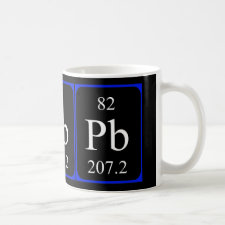
Authors: Ghoohestani S, Faghihian H
Article Title: Selective separation of Pb2+ from aqueous solutions by a novel imprinted adsorbent.
Publication date: 2016
Journal: Desalination and Water Treatment
Volume: 57
Issue: (9)
Page numbers: 4049-4058.
DOI: 10.1080/19443994.2014.993718
Abstract: In this research, a selective ion-imprinted adsorbent was synthesized by polymerization of chitosan on the MCM-41 surface. The adsorbent was characterized by FTIR, X-ray difractometer, and TG/DTG techniques. The surface area, pore size, and pore volume of the adsorbent were calculated by nitrogen adsorption-desorption isotherms. The adsorbent was used for selective separation of Pb2+ from aqueous solutions. The effect of different experimental conditions on the adsorption capacity was examined and the optimized conditions were determined: pH 5.5; contact time, 60 min; temperature, 298 K; Pb2+ concentration, 250 mg L-1; and adsorbent dose, 0.1 g. The maximum adsorption capacity was 57.7 and 27 mg g-1, respectively, for ion-imprinted and non-ion imprinted adsorbents. The removal efficiency for ion-imprinted sample was 92%. Breakthrough adsorption capacity was measured as 50.75 and close to the static adsorption capacity. The relative selectivity factor for Pb2+/Cd2+ and Pb2+/Ni2+ pairs were, respectively, 52.43 and 80.56. The relative standard deviation of the method was 1.12% for 10 replicate samples. The data collected from the adsorption isotherms was fitted to the Langmuir equation
Template and target information: lead ion, Pb(II)
Author keywords: adsorbent, selective removal, Pb2+, adsorption, chitosan, MCM-41



Join the Society for Molecular Imprinting

New items RSS feed
Sign-up for e-mail updates:
Choose between receiving an occasional newsletter or more frequent e-mail alerts.
Click here to go to the sign-up page.
Is your name elemental or peptidic? Enter your name and find out by clicking either of the buttons below!
Other products you may like:
 MIPdatabase
MIPdatabase









